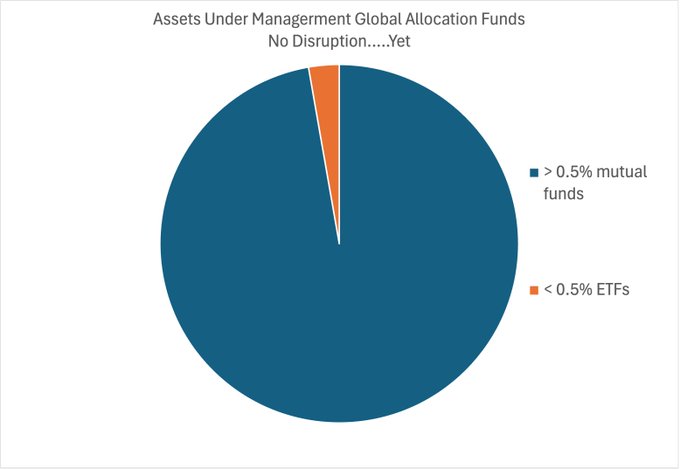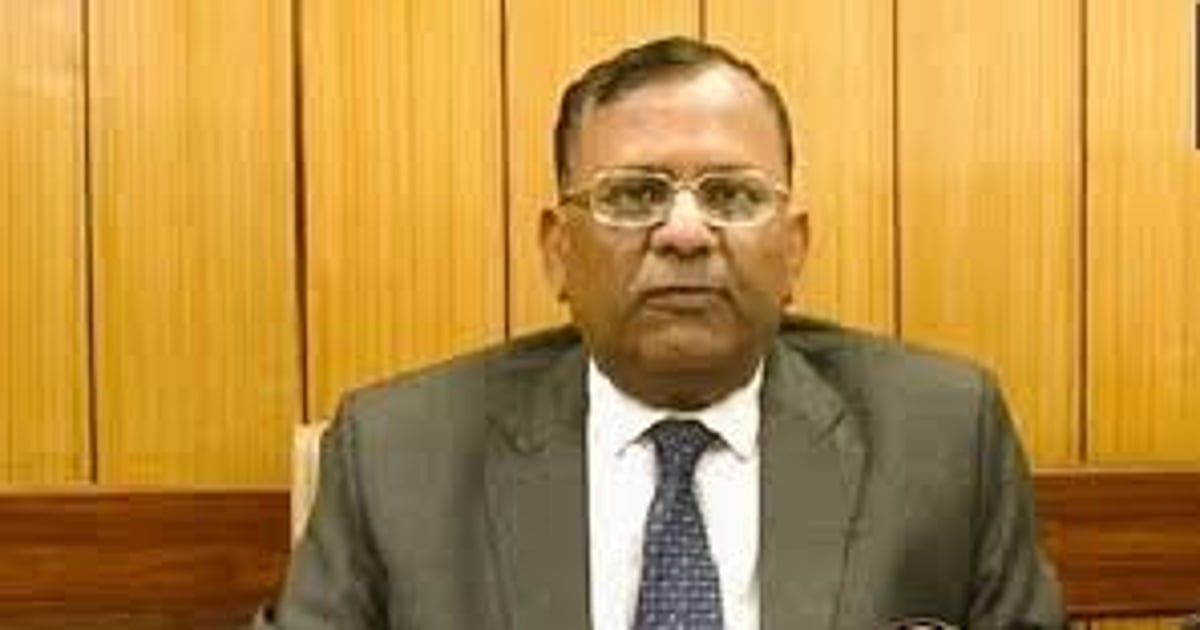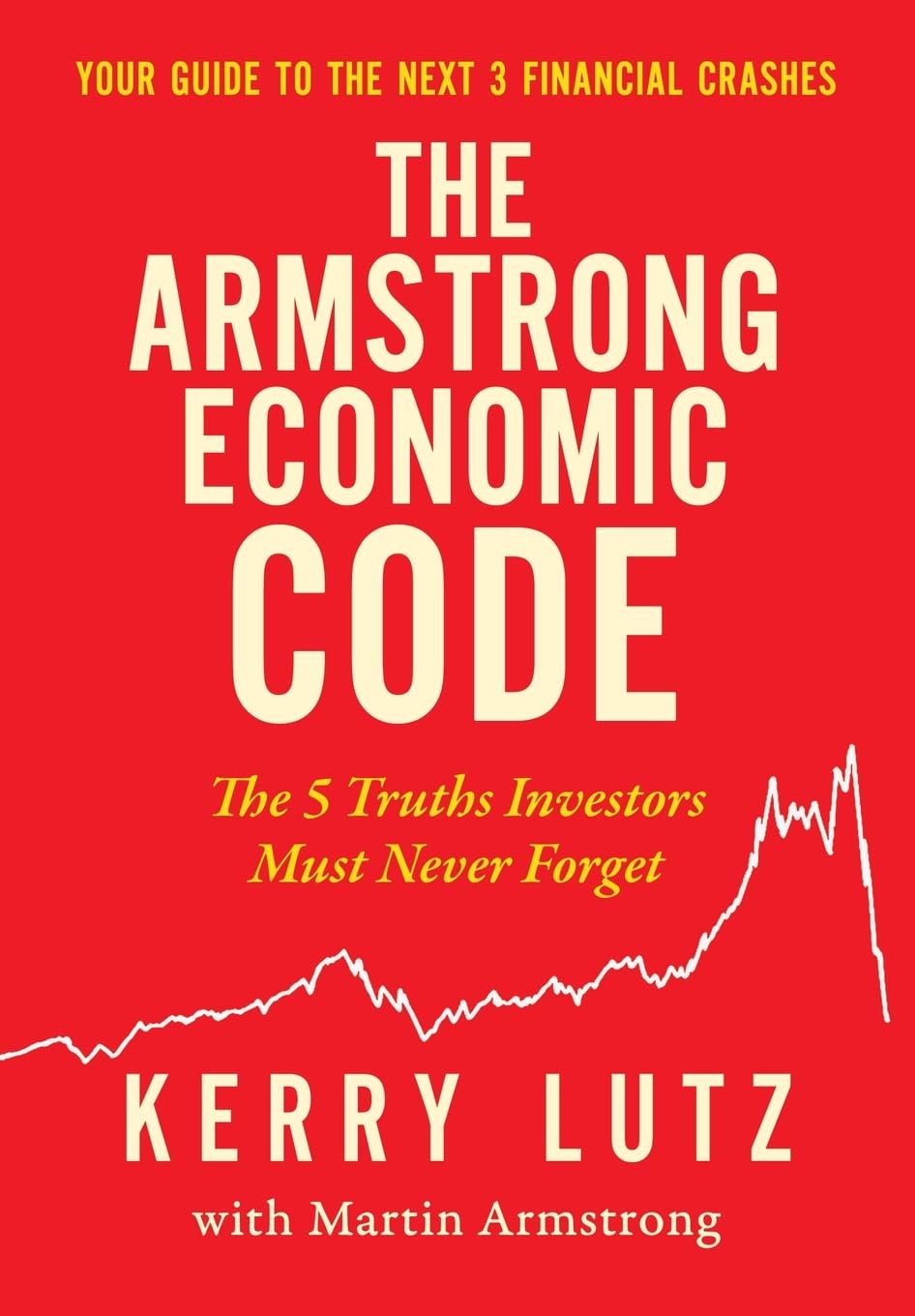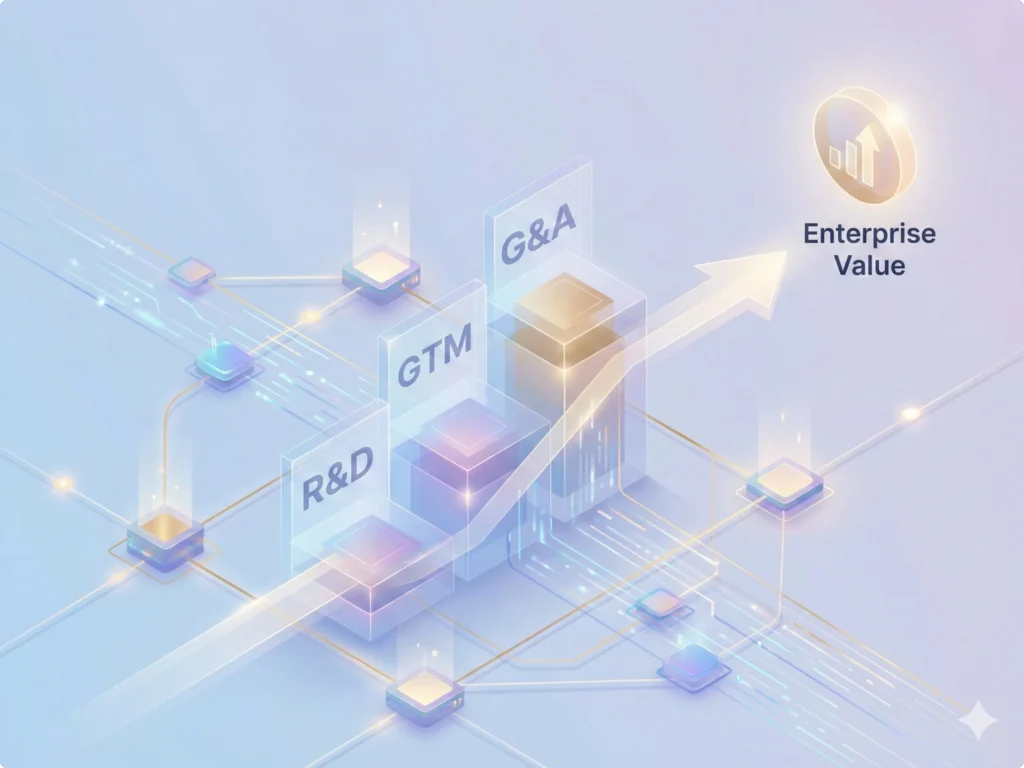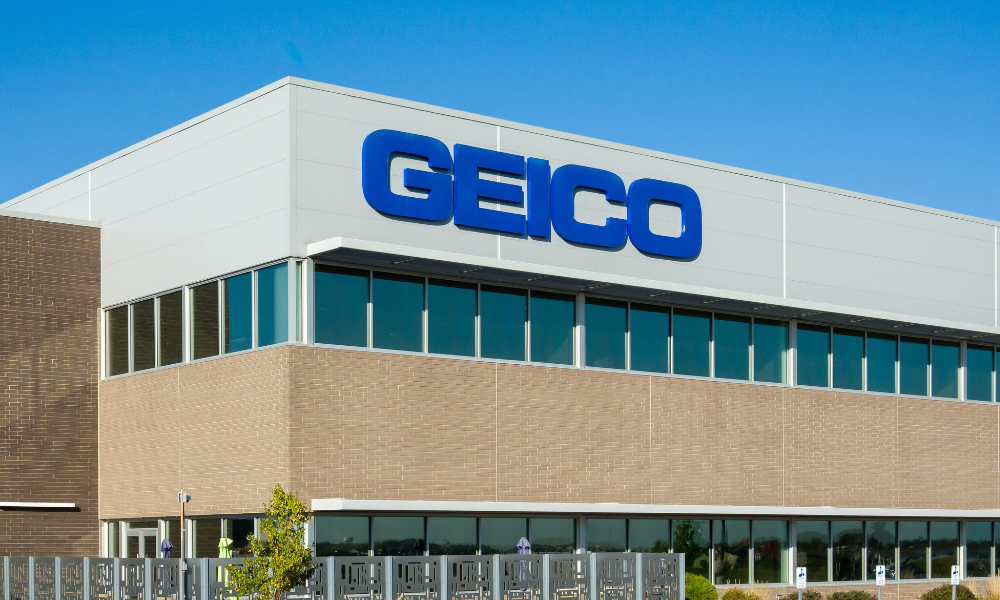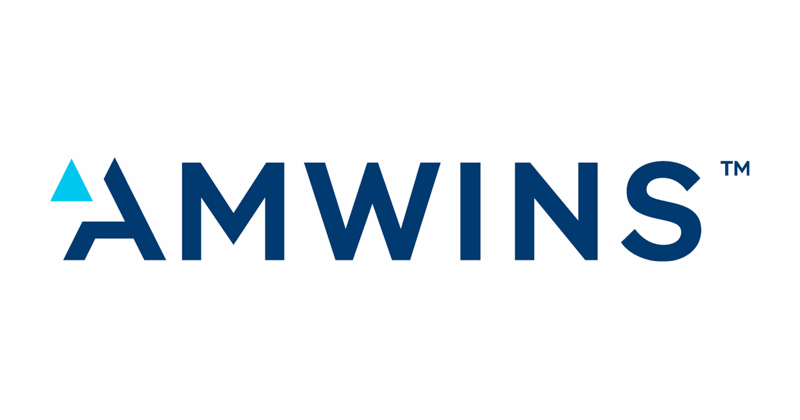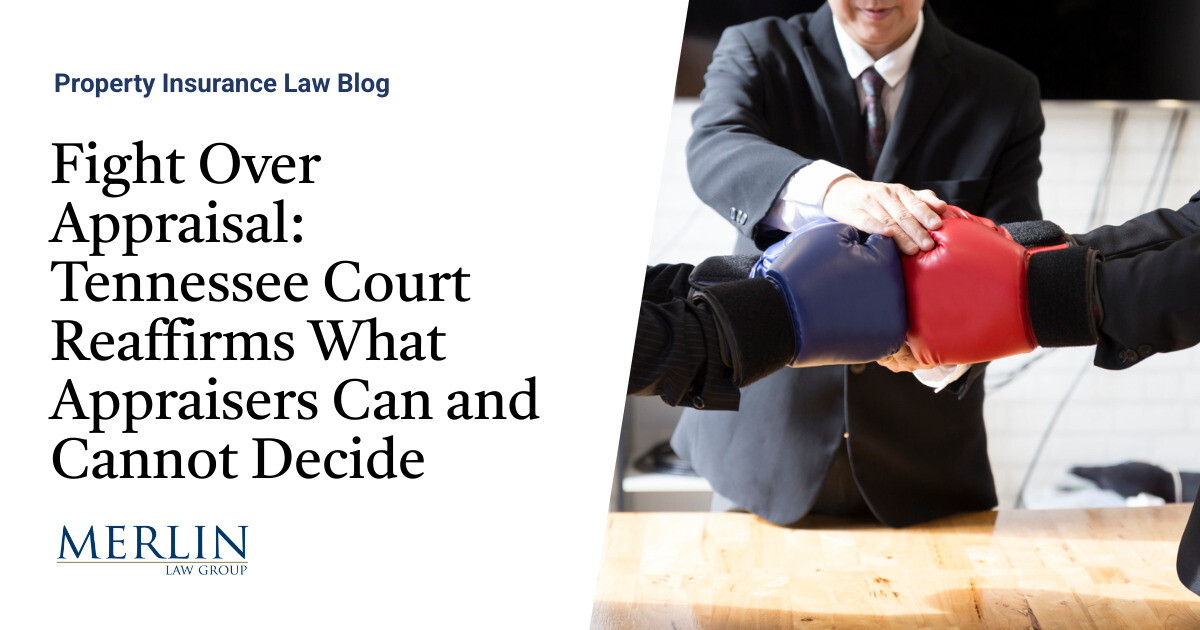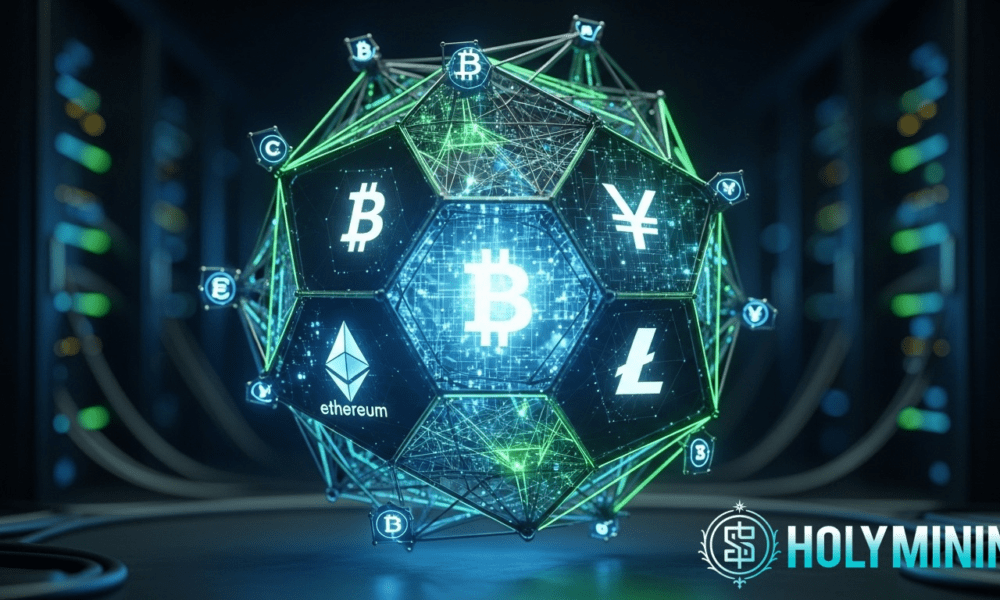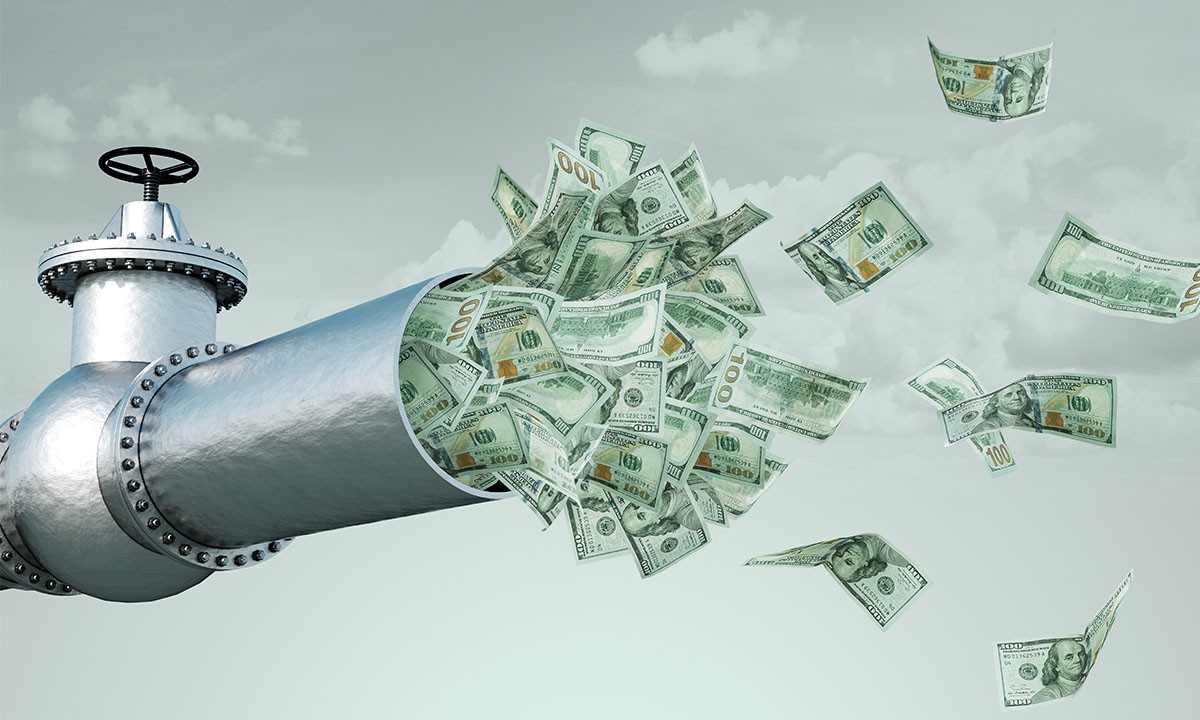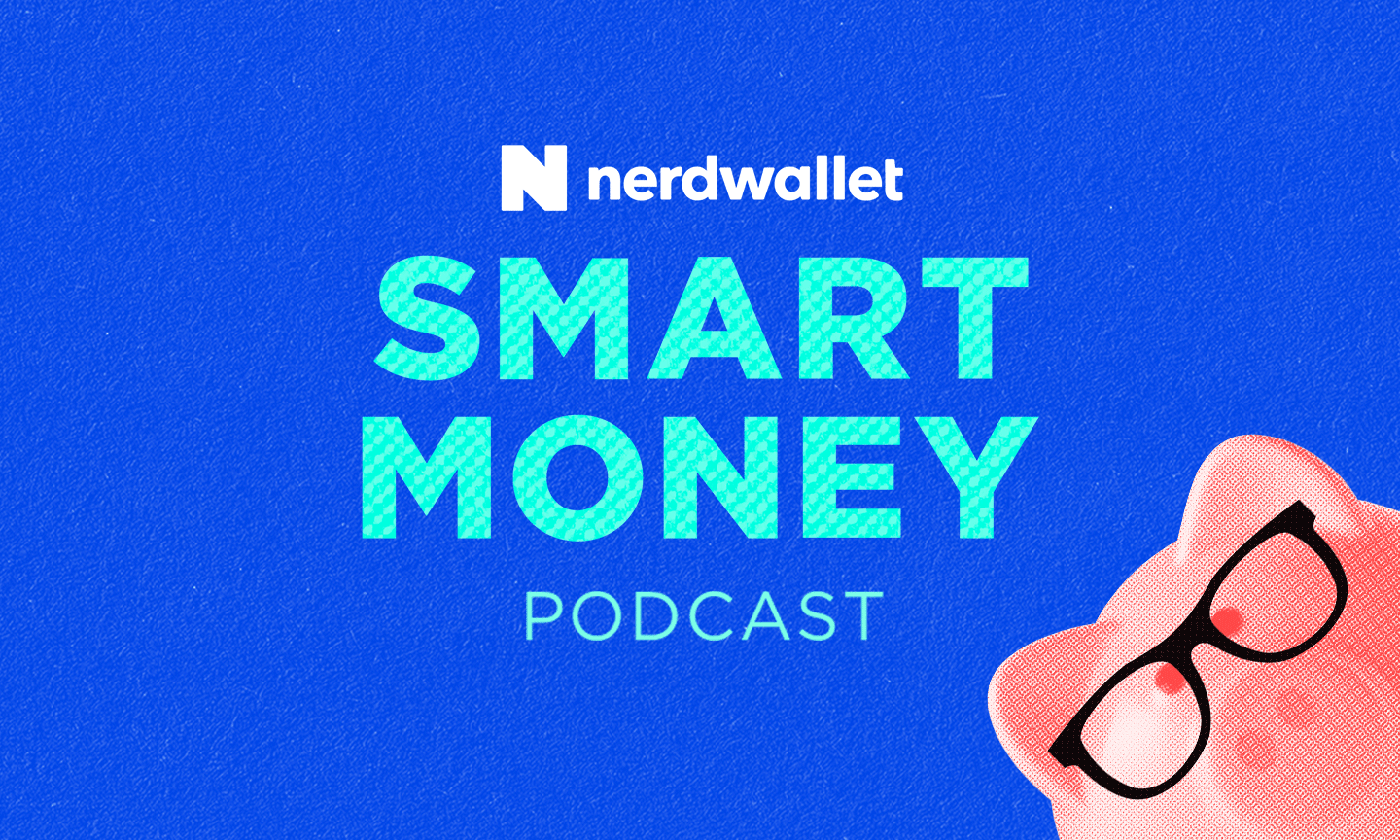Welcome to NerdWallet’s Smart Money podcast, where we answer your real-world money questions. In this episode:
Listen to our webinar on how banking right can help you grow your money, with tips for choosing accounts and changing banks.
What are the benefits of online banks or credit unions over traditional banks? What should you consider before changing banks? How can you passively grow your wealth by putting your money into savings accounts and CDs? NerdWallet’s Kim Palmer moderates a discussion on banking-specific topics that could help you get more from your money.
Choosing a Banking Institution: Banking Nerd Spencer Tierney explores the essentials of banking, from choosing the right bank accounts to understanding the benefits of different banking institutions like online banks, credit unions, and national banks. He discusses the importance of federal deposit insurance for account safety and how banks use your deposits to fund loans and investments, potentially paying you interest in return. He also touches on the convenience and security offered by banks through services like direct deposits, bill payments, and encrypted online platforms, and covers the pros and cons of online banks.
Different Types of Bank Accounts: Banking Nerd Chanelle Bassette explains basic types of bank accounts, including checking accounts, savings accounts, and certificates of deposit (CDs), each serving different financial purposes. She emphasizes the importance of high interest rates and savings features like automatic transfers and roundup programs. Then, she discusses how CDs can help you reach medium to long-term savings goals.
Leveraging Savings Accounts for Financial Growth: Banking Nerd Margarette Burnette discusses the benefits and strategies for optimizing savings through high-yield savings accounts. She discusses the security provided by federally insured accounts and the impact of rising federal interest rates that can benefit savers. She also explains the power of compound interest by comparing the growth offered by traditional low-interest savings accounts with the gains possible from high-yield accounts, and touches on the difference between simple interest and APY.
Check out this episode on your favorite podcast platform, including:
NerdWallet stories related to this episode:
Episode transcript
This transcript was generated from podcast audio by an AI tool.
Hey, Nerdy listeners, Sean here. If you’ve been wondering how to make the most of your banking, this is the episode for you. For your listening pleasure, we are presenting a lightly edited webinar that our genius banking Nerds put together. They cover topics like how to choose the right bank accounts, what banking products can help you grow your money, and how to decide between online banks, credit unions, and big national banks. Without further ado, here’s the episode.
Welcome everyone. I am Kim Palmer. I am a personal finance expert at NerdWallet, where we help people make smart financial decisions. One important note before we get started, we are not financial or investment advisors. This nerdy info is provided for general educational entertainment purposes and may not apply to your specific circumstances. NerdWallet Inc. is not an investment advisor or broker and does not provide personal financial advisory services. Today is the second in our three-part webinar series.
We are excited to talk to you about the basics of banking and bank accounts, and we think we have some helpful tips to share with you. You can always find more at nerdwallet.com or on the NerdWallet app. Our goal today is to kick off a helpful discussion about choosing and managing bank accounts and banking tools. Chanelle Bessette, Spencer Tierney and Margarette Burnette write about consumer banking topics ranging from checking and savings accounts to overdraft programs. Spencer, can you please introduce yourself and tell us about banks?
Thanks, Kim. Yes. Hi, I’m Spencer Tierney and I write about consumer banking at NerdWallet. So, a bank is really just a type of for-profit business that has a charter or license to hold and lend you money. I’ll start with how banks work and then unpack the different types of banks and then I’ll end with how to choose a bank that’s right for you. So, a bank is like a supermarket for money accounts and services such as checking and savings accounts are the most common places to spend and save money. You’ve got credit cards and other loans. You also have online and mobile services to help you with your everyday transactions, receiving income via direct deposit, paying bills, transferring money, and then for a lot of banks but not the online banks, there’s in-person services helping you with the cash and check services at ATMs or branches and face-to-face customer support.
But I want to remind everyone that banks aren’t the only places that offer money services. So, Walmart has check cashing and other major retailers like 7-Eleven, CVS, they let you add money on certain debit cards at the register. But a bank can offer the widest range of services plus a little bit more of something else, safety. Here’s why your money is safe at a bank as opposed to at home under a mattress, say. First, you benefit from federal deposit insurance. This is insurance banks pay for and you benefit from. So, most banks are members of the Federal Deposit Insurance Corp, the FDIC. And what that really just means is that if a bank fails, you still get your money back, at least up to $250,000. That’s the standard maximum. Other things though are pretty important. So, you’re protected in case your debit or credit card gets stolen, your responsibility to pay for unauthorized transactions, that can be as little as zero, especially for a lot of credit cards these days.
And then lastly, a lot of banks and credit unions, they protect their websites with encrypted websites and apps and they protect you from thieves to access your accounts or steal your credit card information. Now we’re going to unwind a little bit to, banks are often associated with piggy banks and that’s fine when we think of banks as places to save money, but we’re going to take a look behind the scenes to understand why banks even bother paying you interest and how banks can compete. So, the money in your bank accounts doesn’t often stay there. A bank works as a middleman between savers and borrowers. Here’s a quick breakdown. One, you add money to an account, let’s say a savings account. Two, the bank uses your money to fund a loan to someone else or the bank invests it. Three, your bank is able to profit off that money, usually by charging interest on a loan.
And then four, your bank pays you interest since they borrow the initial money from you, though it’s not always a lot of money, especially if you belong to a big national bank. But through all this, you can still withdraw your money when you need to, and that’s an important point. So, now we’re getting into the distinctions of where you can bank. Now, traditional banks are one type. They’re also called brick and mortar banks, meaning they have branches. These for-profit businesses vary widely in size. So, you’ve got national banks, regional banks, and then the smallest, community banks. Then there are credit unions. So, these are not-for-profit equivalents to banks. They have their own deposit insurance and banking license through the National Credit Union Administration. They require membership to join, which can be easy, such as a $5 donation to a nonprofit, or a bit more difficult, such as needing to live in a certain state.
Then we’ve got online banks and a few online credit unions. So, these have their own license for nationwide reach and their accounts and services are accessed almost entirely on a website and mobile. Those are all the ones that have official banking licenses. There is one that’s a little bit newer and it’s very similar to an online bank. Neobanks are banking tech firms that usually partner with licensed banks to offer FDIC insured accounts. And this can work just fine for the most part, but in the off chance if something goes wrong, we have seen that delays in accessing money can be an issue.
Thank you, Spencer. All right, we actually have one audience question, Spencer, specifically about the pros and cons of online banks.
Yeah. Sure, Kim. So, building off the types of banking institutions, we’re now going to be looking at the pros and cons of various places to bank. So, national banks, so these are the biggest ones we mentioned. So, biggest branch and ATM networks with their very familiar logos, but you often need minimum balances to help waive the monthly fees and the savings rates there tend to be pretty low, the lowest actually out there. Regional or community banks and credit unions, they have a better pulse on local community needs. Usually the smaller, the more neighborhood it is, so their loans and support can be more personalized and easier to get. And credit unions have a slight edge over community banks in that they often offer higher savings rates and lower fees. But then smaller community banks and credit unions collectively, they often don’t have the most up-to-date apps or websites just because they’re smaller, their budgets are smaller.
And then online banks are well-known for their fee free checking and high interest savings accounts, so pro. And then going into neobanks, they’re more focused on checking accounts sometimes with savings accounts and they often offer non-traditional perks such as cashback rewards on spending or savings programs. But now here’s the con, online banks and neobanks can have barriers if you’re not really good with technology, you’re not able to DIY or troubleshoot a lot of your problems and you often need to rely on talking to customer support to resolve issues. They do have support, you can talk to representatives by phone or online messaging online, but there’s no branches so you don’t have the extra layer of help if you really need to sit down with someone.
And then overall, remember these are just trends, not all financial institutions fit these profiles. All right, so now as we go on, one starting point when you’re thinking about choosing a bank is deciding whether you’re fully switching banks or you’re adding a secondary bank to your financial ecosystem. And do you need joint accounts or just one checking account or a savings account? Not every bank has everything. And now second, managing expectations. If you go with an online only institution, you generally can find high rates but no branches. And then if you go in the opposite way, if you go to a traditional bank, it tends to be the opposite. And then when choosing bank versus credit union, this may come down to rates or fees or membership sometimes.
And if you’re just starting out or have variable income, community banks and credit unions tend to work with you a bit more than the biggest institutions. Now third, pick what features you need, even if you’re not picky, see if there’s anything missing. So, paper checks, weekend phone support, a nearby branch, a lot of banks have been coming to the scene and not all the traditional amenities are out there. Now four, compare using lists of best checking accounts or best savings accounts on websites such as nerdwallet.com. So, I’m going to give you a personal example how I chose my banks. First I started with a national bank. It’s now my secondary bank. It has nearby branches so I can get quarter rolls for say laundry, cashiers checks if I move to a new apartment and the landlord is very old school, and then foreign currency if I travel abroad and I want to have that currency before I leave.
And my parents still bank there, so there’s a legacy reason why I’m there, but that’s not to say I will always bank there. And then my online bank that came up a few years ago actually, where I decided to make that my primary bank. I started with just the high-yield savings account, wanted to earn a better rate than I was. Then I opened a free checking account because in this case the bank had a debit card with no foreign transaction fees or ATM fees on its debit card. So, that made traveling abroad a little bit less pricey as far as getting cash out. And then I opened a CD at some point too. All this to say that you can have most of your accounts at one place and that’s not a big thing. And then the last thing I like to think about with your banking is that your alerts and transfer settings are part of your banking.
So, I have split direct deposits to separate income in different accounts, I have text alerts for card transactions over $10 to monitor for fraud, and then automatic transfers for budgeting. As you think about switching or adding a bank to your financial ecosystem, here are some of the red flags for your current bank to consider and really think about the urgency in which you have to switch. So, are you paying fees regularly? Is the savings rate low and earning interest is a priority for you now? And then is the bank lacking on service? Do you need more convenience or just better support? All of these things, they’re very legitimate reasons to start considering do you need to move? And then one last point on this is that switching banks usually means managing accounts at two different banks at the same time. So, have enough time and money to manage that transition since it can take a few months just to get all those subscriptions over.
Well, thank you Spencer for that. Now we’re going to turn to Chanelle who covers checking accounts for NerdWallet. She is going to introduce herself and discuss types of bank accounts, what to look for when you’re shopping for a bank, and what you should consider when it comes to avoiding fees.
Cool, thanks Kim. Yes, hi everyone. My name is Chanelle Bessette and I’m also a consumer banking writer at NerdWallet, like Spencer. So, let’s talk about the different types of bank accounts that you can open along with what they’re good for. You can use different types of bank accounts for managing your money in different ways. The most basic bank accounts are checking accounts, savings accounts and certificates of deposit, and they can help with different types of money and savings goals. Let’s talk about checking accounts. It’s often one of the accounts that people first open and they’re good for money that you use for your regular expenses and for paying bills. This type of account usually comes with a debit card and sometimes paper checks, or you can sometimes have the option to have checks paid from your account and sent by your bank. And so if you need money for everyday spending and you decide to use a debit card for your regular expenses and payments, it’s usually best to keep that money in your checking account.
And I saw that we got a question that came in from the audience and it was, “How can I get a bank account at a brick and mortar, but I’m in ChexSystems, even if the accounts have been fully settled and paid in full?” So, this is a great question and it’s something that a lot of folks come up against. So, to define what ChexSystems is, it’s basically kind of like a credit score that banks use to look at different consumers who are looking to open a bank account. And in ChexSystems, if a bank has said, “Oh, this person, they forgot to pay for an overdraft fee for a long period of time.” I’m not saying that that’s what our audience member did, but this is an example that comes up often for people who end up in ChexSystems.
“Oh, they forgot to pay an overdraft fee. It became overdue for a long period of time and eventually we filed something to put them in the ChexSystem.” Basically it’s like a report that other banks can now see and say, “Hey, we’re not sure if we want to give this person a bank account.” And eventually that does fall off of your personal report. I believe seven years is typically the length, but you can settle up and have it paid off well in advance of that. So, if you’re in this kind of situation, there’s something you can get called a second chance checking account, and we have a great resource at NerdWallet that lists a ton of them. Based on different states and where you live, you can find one. They’re often called things like either a second chance checking account or maybe a fresh start checking account. And these are accounts that help you rebuild your reputation again in the eyes of banks.
And so they might come with monthly fees, they might have a bit more guardrails on what you can do with them, but they are a really great way to prove like, “Hey, look, I’m back on track. This is something that I can handle.” And then banks can sometimes offer the ability to transition that account into one of their regular checking accounts. So, it’s a pretty great option. And then you can also look into secure debit cards, which basically means you have a savings account to back up however much you’re able to spend with that secure debit card. So, there are options out there, they’re a little bit trickier than maybe the regular types of brick and mortar bank accounts, but it’s an option if that’s something that you’re interested in. But moving on to the next type of account, savings accounts, which I’m sure many of us have heard of.
So, they’re great for setting aside money that you’re going to use for future goals. And it’s great to keep this separate from your spending money in your checking account so that you don’t feel tempted to use this money for day-to-day expenses. And so by keeping your money in this type of account, you’re ideally going to be earning interest. And some savings accounts have really high interest right now of 5%. My colleague Margarette in her section is going to be talking about different interest rates and how these are really great to look for. But there are also some banks out there that offer savings features like automatic transfers from your checking account and roundup programs where your debit purchases are rounded up to the nearest dollar and then the bank saves the difference in your savings account. So, if you’re looking to prioritize saving, you’re going to want to potentially look for a bank that offers features like this, but at the very least a high interest rate is great to look for.
So, now Chanelle, you can talk about certificates of deposit.
Certificates of deposit, also known as CDs, not the music kind, although I hear those are making a comeback. These are also known as share certificates at credit unions, which basically function the same way as certificates of deposit at regular FDIC insured banks. So, CDs are basically a type of savings account and they’re great for medium to long-term savings goals. So, like savings accounts, CDs can earn a high interest rate, but there is kind of a catch or an exception and that’s that usually when you’re opening a share certificate or a CD, you are agreeing to lock up your money for the set period of time. And there are ranges that you can open CDs for, some of them are as short as a few months, but some of them could be as long as five years or even longer.
And so the ones that we tend to feature on NerdWallet are often the one-year, three-year, five-year. Those are pretty common across a lot of banks and credit unions. When you do open that CD, it’s a guarantee that you’re going to earn that same rate for the full length of the term that you’ve opened the CD for. So, that can be a bit of a boost over a savings account. Savings accounts are great because you can access that money at any time, but your interest rate can fluctuate a ton just depending on what your bank decides to do, or what’s going on in the macroeconomy. A CD locks in that term. So, if you have something like perhaps you’re saving up to buy a house or a car and you want to put your down payment away somewhere where it’s going to earn interest and you know you’re not going to touch it for maybe a year or two, CDs are an excellent way to go.
There is another type of CD called a no penalty CD, which means you can access your money before the term life is up and not be charged a penalty for it. So, that is an option as well, although those tend to be a bit more rare to find than regular CDs. But if you’re worried about having your money locked up and you don’t want to pay a penalty for withdrawing it, that could also be an option. So, since they’re meant to sit and earn interest, they are great for those kinds of goals that you don’t immediately need. It wouldn’t be great to put an emergency fund away into a CD where it isn’t easy to access. So, now we’re going to talk about how to shop for a bank now that we know what the different kinds of main bank accounts are, but I’m going to get a bit more into the kind of specific features that you’re going to want to look for when you are searching for a new financial institution to put your money in.
So, as Spencer touched on, fees are a huge consideration when it comes to opening a new account. So, you’re going to want to look for a bank or credit union that has low or no fees. And so monthly fees are a pretty obvious one to look for, but there are also some other fees you might want to consider like minimum balance fees, which basically means your bank will charge you a fee if you don’t keep a certain amount of money in your account. And then ATM fees and overdraft fees are also things you want to look for. And when you’re going on a bank’s website to investigate, you’re going to want to look for phrases like no fees or free. Also, an insider tip we do a lot at NerdWallet, is to look up your bank’s fee schedule and that way it’s like in black and white fine print exactly what you’re on the hook for when you open a bank account and you can see what the different fees are.
And then second, high interest rates are great to look for. It’s one of the main things that we encourage consumers to look for when opening a new account, because as Margarette’s going to talk about in a minute, the higher the interest rate that compounds over time, the better off you are. So, you want to comparison shop to make sure you know what kind of rates are available. Okay, so I already mentioned this very briefly, but overdraft fees and overdraft policies are a huge thing to look for, especially when you’re just starting out on your financial life. Maybe money isn’t as consistent or as much as you eventually end up getting later in life. So, overdraft fees can be something that hits all of us. I know I’ve gotten them before. A basic overdraft fee is when you try to make a transaction and there isn’t enough money in your bank account, and so your account goes into the negative in order to cover the cost of that transaction.
And for a lot of banks, they charge fees that are getting better. They’re not quite as high across the board as they used to be, but there are still some banks that charge 30 plus dollars every time that happens. And a lot of banks are trying to reduce overdraft fees to make themselves more competitive. So, there are some options out there that are making it easier to not be hit with overdraft fees. But even so, you’re going to want to research the bank and see what their policies are. You’ll want to look for related fees as well, things like a continuous negative balance fee or an extended overdraft fee. That’s basically a fee where if you keep your account in a negative balance for days on end, your bank will start charging you fees every day that your balance is negative, which can add up very quickly.
Other things to look for when it comes to policies, overdraft protection transfers, like a bank will allow you to take money from your savings account to cover whatever that negative balance would be. Or they might offer something called an overdraft line of credit, which is basically like a short-term loan, almost like a credit card, where you can dip into your line of credit to cover whatever the transaction would be. But you are going to be charged an interest rate that could be quite high like a credit card. So, that can be more of a last resort kind of option. And then there are a lot of banks these days that are offering buffer programs, meaning you can overdraft up to $50 and you won’t be charged a fee. Or you might get a grace period where it’s like your account is negative, but you have a day to bring it back into the positive before we charge you a fee.
So, there are options out there these days that help you avoid those kinds of fees. Beyond that, customer service preferences and special features are good things to look for when you’re considering a new account. So, think about the convenience factor. If you prefer online banking, then you might want to look for a bank that has really good mobile app reviews, or if you want in-person customer service, you may want a bank that has branches near you. And then in addition to interest rates, when choosing a bank you might want to consider what special features would be useful to you. Some special features you might want to consider would be early direct deposit. Some banks provide your paycheck funds up to two days earlier if you set up direct deposit. And then cash back is something that some banks offer, sort of like with spending with a credit card, you get cash back for your spending.
So, a typical amount might be like 1% cashback when you use purchases that are made with your debit card. And then finally, sub-accounts are something that we like to see when we’re evaluating a bank, and that’s the ability to have your main savings account broken up into sub-accounts. So, within your one main savings account, you could have accounts that are designated to whatever you specify. So, you might want to name these sub-accounts to help you better manage your money. For example, you could have a sub-account for your emergency savings, one for your vacation savings, maybe one for medical bills and so on. So, it can be just a really helpful way to organize your money.
Amazing. Thank you so much Chanelle. All right, now we are going to turn to Margarette. She is going to introduce herself and talk about how to level up your savings account to earn more interest and help you reach your savings goals.
Thanks, Kim. I’m Margarette Burnette and I primarily cover savings accounts and money market deposit accounts at NerdWallet. And as Spencer and Chanelle have discussed, we know a savings account is a place where you can stash your cash without it being mixed up with your regular spending money. And what I’d like to do is dig deeper into why you should care about savings accounts and also how you can kind of level up your savings. So, we know from our earlier slides that savings accounts are typically offered by banks or credit unions and they’re federally insured up to a pretty large amount. So, that right there is one reason to care about them. They are typically insured as much as $250,000 per owner and account type at each institution. And so if a bank or credit union fails, your money is safe up to that amount.
So, you might’ve heard about some pretty large banks failing earlier this year. That’s very rare, I’ll just say that right now. That’s very rare. But if it happens, then that’s where federal insurance steps in. So, beyond that, savings accounts also earn interest, and this is where your money can actually be working for you. If you pick the right account, your balance can grow without extra effort on your part. In other words, you can really level up your savings. Let’s look at a scenario. Imagine you put your money in a big national bank, and if you’ve ever looked at the interest rate on these accounts, they’re often really low, some as low as 0.01%. So, let’s go with the scenario and say that in the past you put away some money and you’re fortunate and you actually have saved $5,000 and are able to make one lump deposit into this big national bank. Well, if you put it in an account that earns only 0.01%, then after a year your money would’ve grown by about $1.
It may actually be a little less than that, but let’s round it up to a dollar. And you can see from our compound interest calculator that there’s next to no growth. So, it doesn’t have to be that way. But first I want to take a step back and talk a little bit about bank interest rates. So, have you heard news in the headlines about the Fed raising interest rates? That’s not great for borrowers, but it’s really good for savers. The federal funds rate is the interest rate that banks charge each other to borrow money overnight, and they do this to meet bank regulatory requirements. And in a high rate environment, a lot of financial companies are able to raise rates under savings accounts to attract customers. This puts competitive pressure on the other banks and institutions to increase their rates.
So, if one bank starts to raise rates in their savings accounts, others are likely to follow. And so I can tell you from personal experience, I was shopping around for a new savings account a couple years ago. That was back when the Fed rate was a lot lower than what it is now. It was an online savings account. So, I opened that account and the thing is, as rates started to climb, that particular institution increased its rates on the money I had in the account as well. And that bank still offers one of the best savings rates around. So, let’s go back to some calculations. The example I gave before started with $5,000, but the reality is you don’t need thousands of dollars to see benefits from a high-yield savings account that can compound your money.
So, let’s go with another example. Let’s say you start with $10 and deposit it into a snazzy bank high-yield savings account that earns say a 4% rate. After three years, you’d have about $383 more than your original amount, and 23 of those dollars would come from your money earning its own money. So, your own money earning compound interest. It may not make you instantly rich, but those dollars do add up. And so when you are looking to put away money, you really do want to look for a high-yield account. I will say that some of the best rates often come from places that you might not have heard of. Spencer talked about neobanks and I’ve come across many neobanks in the last few years that I’ve never heard of before.
And many are online accounts that you can only access via your mobile browser or through the internet. And so you might wonder if that’s safe. I know I would ask that, but the key is to make sure that the account is federally insured. So, going back to the FDIC or NCUA, you want to look and see if that account has that FDIC or NCUA symbol or if it’s a neobank or FinTech, make sure that they clearly state that they are partnering with a bank in order to provide that FDIC insurance to your deposits. That’s how you can know your funds are protected. And also, by the way, that extra $23 in that last example highlights the difference between the simple interest rate and APY, which I believe Chanelle mentioned earlier. The terms are often used interchangeably, but they’re different. So, what happens is that over time that interest on an account earns interest, which is known as compounding.
So, some people have referred to this kind of as the magic of compounding, because it can really boost your bank balance. So, just something to keep in mind. Interest rate only accounts for the interest earned on the original amount, but the APY includes that interest on the original balance and the amount of compound interest earned in one year. So, bottom line, interest helps you reach your savings goals faster. The higher the rate, the faster your money grows. All right, so let’s get back to that $5,000 example, but this time, let’s put it in a high yield account. If that $5,000 earns a 4% APY and is left alone for a year, it would earn more than $204 in that timeframe. So, that’s a big difference compared to that other example where it was under $1 of an increase and it didn’t really require any extra effort on your part.
And also remember how one of Chanelle’s suggestions is to look for an account that makes savings easy or has an automatic savings feature? This example shows why. If you take that original 5k and make monthly contributions, say like $100 each month for three years, those additional deposits will also earn interest. And after three years you would have contributed a total of $8,600 and that’s a lot of money to put away. But with monthly compounding at 4%, you’d actually accumulate more than $9,400 by the end of the third year. So, all of this goes to say that your balance can really increase if you commit to putting your money away regularly and also in a high-yield account. And also, even though I talk a lot about savings, I do want to say this one thing about credit cards. Some banks will let you open secure credit cards that are backed by your savings account.
So, if that is one of your financial goals, then maybe you can look at building your savings in a high yield account first. And then once you have that savings, look into securing a credit card. So, that was just a quick little side tip there. And then also for a longer term level up, you can lock in the rates now with the CD. We talked about how interest rates now are kind of on the higher end. So, if you think that they might go down, locking them in now with a CD, if you can go without touching that money, it kind of works if you won’t need to touch it for a while. And that way that money is there earning the same higher rate just in case rates go down in the future. I’ll also leave you with a few things to keep in mind.
Some accounts require a certain minimum balance in order to earn the savings rate, but there are accounts that earn high rates with no minimum balance. So, always try to keep your money in an account that won’t charge you a monthly fee, because the goal is to build up your savings and not to pay it back to the bank in the form of a monthly fee. So, a high yield savings account should definitely be in your bag of tricks to help chart a path to reach your financial goals. And with that, I’ll give it back to Kim.
Thank you so much, Margarette. That was so interesting and helpful. Does anyone have any questions on leveling up savings or any of our other topics?
I think I see a question that asks about high yield savings accounts. “Do some high yield savings accounts have a fixed rate for a specific time, or do you all follow the national interest rate?” And generally speaking, savings accounts are variable, so the interest rate can change at any time. So, that is a good question. If you want to lock in a rate for a particular amount of time, put it in a CD. And of course as Spencer and Chanelle mentioned, the caveat is that you wouldn’t really be able to touch it, or it’s best to not touch it for that period of time that the money is in the CD.
If you want to save money for an emergency fund or something where you don’t know if you might need to use it, I would still say go with the high-yield savings account because that way you can have access to your money. And just as I’ve seen personally, the accounts that offer some of the best savings rates, they continue to offer the better rates compared to their competitors over time, whether rates are going up or down.
Great, thank you. I see another one here that might make sense for Chanelle to answer. “Can I continue to add money into my account when I’ve already invested?” Perhaps that relates to your CD discussion, Chanelle.
Yeah. I believe that when you open the CD it’s pretty much just locked in with whatever you opened it with, and then you’d have to open a new CD to add money.
Perfect. Thank you. I’m not sure which one of you wants to take this one, but we have a couple of questions about credit scores and, “Do switching accounts hurt my credit score or help them?”
Thankfully, there is no detriment to your credit score if you decide to open a new bank account. It’s a different system. Credit scores are more based on your capacity to be lent money or given credit, whereas bank accounts are different. Although, like I mentioned, ChexSystems is basically its own kind of force within the banking industry that allows banks to determine your worthiness as a new account opener, for better or for worse, it’s not always greatly accurate or fair. I think that the only thing you’d want to think about is if you do open an overdraft line of credit, that is a form of credit that is connected to your bank, but it works like your credit score and doesn’t affect opening accounts like it would with a credit card.
Perfect. Thank you so much. Now Spencer, we have a question for you here, “How to ladder with $6,000?”
Yeah. So, that sounds very cryptic on its own, but basically we have articles that go into CD ladder strategies. So, this all just means that you’re using multiple CDs with one initial investment that’s split up into those different CDs. So, for $6,000, let’s say it’s three CDs, so $2,000 in three different CDs, let’s say one year, two year and three year. And then you get all those CDs at one time. First CD matures, you’ll actually either have the option to withdraw if you really need that cash now, or decide to invest in the longest term of that ladder, so in this case, the three-year. Second year comes, you’ll do the same thing, choose whether to withdraw or put that into a three year.
And by the end of the third year, you’ll actually begin to have every year after that for three years you’ll have one CD with more earnings mature. Always one of those things where it could be more convenient to just have one CD, but if you are unclear about where CD rates are going and you really want to make sure that you don’t need to time the market, the CD ladder is a good way to hedge your bets by really taking advantage of longer term CDs now basically and over time.
Great. Thank you Spencer for explaining that one. Well, thank you so much everyone. I think that’s all our questions. We hope you enjoyed this webinar and learned something today. If you’d like to get even more clarity on your finances and continue learning with NerdWallet, consider signing up for an account with us at nerdwallet.com. Thank you so much for joining us.
For now, that’s all we have for this episode. If you have a money question for the Nerds, hit us up on the Nerd hotline by calling or texting 901-730-6373. That’s 901-730-N-E-R-D. You can also email us at [email protected]. Also visit nerdwallet.com/podcast for more info on this episode. And remember to follow, rate and review us wherever you’re getting this podcast. This episode was produced by NerdWallet’s webinar team, which includes Sarah Clark, Alikay Wood and Sherry Gordon. Liz Weston and Tess Vigeland helped with editing, Kaely Monahan mixed our audio, and a big thank you to NerdWallet’s editors for all their help.
Here’s our brief disclaimer. We are not financial or investment advisors. This nerdy info is provided for general educational and entertainment purposes and may not apply to your specific circumstances. And with that said, until next time, turn to the Nerds.








